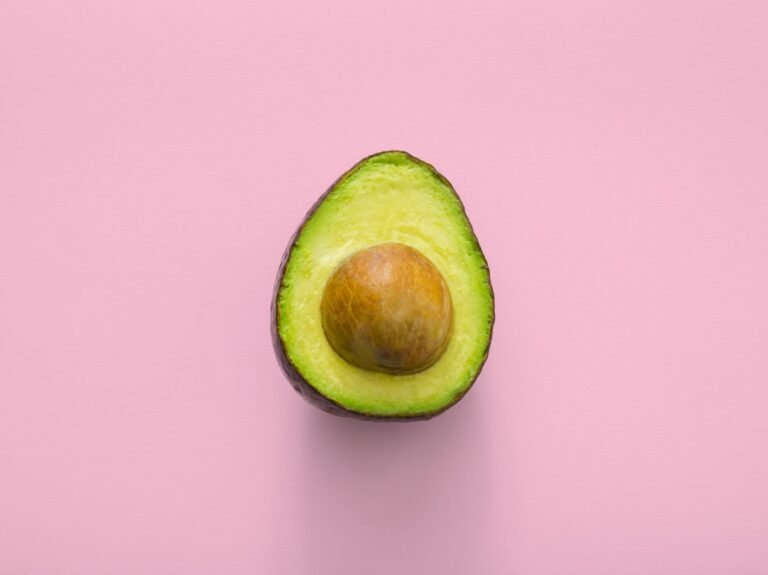Indian spices have a rich history that dates back thousands of years. India has been known as the “Land of Spices” since ancient times, and its spices have played a significant role in shaping the country’s cuisine and culture. The use of spices in Indian cooking is not just for flavor, but also for their medicinal properties and ability to enhance digestion.
Spices are an integral part of Indian cuisine, and they are used in a variety of dishes, from curries to chutneys to desserts. Each spice has its own unique flavor profile and is used in different ways to create a harmonious blend of flavors. Some of the most commonly used spices in Indian cooking include turmeric, cumin, coriander, cardamom, cinnamon, and cloves.
In recent years, there has been a growing demand for Indian spices in international markets. The unique flavors and aromas of Indian spices have captured the attention of chefs and food enthusiasts around the world. Indian spices are now being used in a wide range of cuisines, from Mexican to Italian to Middle Eastern. This growing popularity has led to an increase in the export of Indian spices, making India one of the largest spice exporters in the world.
Key Takeaways
- Indian spices are popular globally due to their unique flavors and health benefits.
- Top spices exported from India include chili, cumin, turmeric, coriander, and cardamom.
- Indian spices play a crucial role in world cuisine and are used in various culinary traditions.
- Major export destinations for Indian spices include the US, Europe, and the Middle East.
- Indian spice exports are subject to strict quality standards and certifications to ensure safety and authenticity.
Top spices exported from India and their production statistics
India is the largest producer, consumer, and exporter of spices in the world. The country produces a wide variety of spices, but some of the top spices exported from India include chili peppers, turmeric, cumin, coriander, cardamom, and black pepper.
Chili peppers are one of the most important spices exported from India. India is the largest producer and exporter of chili peppers in the world. The country produces a wide variety of chili peppers, ranging from mild to extremely hot. The production of chili peppers in India has been steadily increasing over the years, with the country producing over 2 million metric tons of chili peppers annually.
Turmeric is another popular spice exported from India. India is the largest producer and exporter of turmeric in the world. The country produces over 1 million metric tons of turmeric annually. Turmeric is known for its vibrant yellow color and earthy flavor. It is widely used in Indian cooking and is also used for its medicinal properties.
Cumin is another important spice exported from India. India is the largest producer and exporter of cumin in the world. The country produces over 500,000 metric tons of cumin annually. Cumin has a warm, earthy flavor and is used in a variety of dishes, from curries to soups to spice blends.
Coriander is also a popular spice exported from India. India is the second-largest producer and exporter of coriander in the world, after Russia. The country produces over 500,000 metric tons of coriander annually. Coriander has a citrusy, slightly sweet flavor and is used in a variety of dishes, from curries to chutneys to salads.
Cardamom is another important spice exported from India. India is the largest producer and exporter of cardamom in the world. The country produces over 20,000 metric tons of cardamom annually. Cardamom has a sweet, floral flavor and is used in both sweet and savory dishes.
Black pepper is also a popular spice exported from India. India is the largest producer and exporter of black pepper in the world. The country produces over 50,000 metric tons of black pepper annually. Black pepper has a pungent, spicy flavor and is used in a variety of dishes, from soups to marinades to spice blends.
The role of Indian spices in world cuisine and culinary traditions
Indian spices have had a significant influence on global cuisine. The unique flavors and aromas of Indian spices have been embraced by chefs and food enthusiasts around the world, leading to the incorporation of Indian spices into a wide range of cuisines.
One example of the influence of Indian spices on global cuisine is the popularity of curry dishes. Curry is a term used to describe a variety of dishes that are made with a combination of spices, including turmeric, cumin, coriander, cardamom, and chili peppers. Curry dishes are now enjoyed in countries around the world, from the United Kingdom to Thailand to South Africa.
Indian spices are also used in a variety of other cuisines. For example, cumin is a key ingredient in Mexican cuisine, where it is used in dishes such as chili con carne and tacos. Cardamom is used in Middle Eastern cuisine, where it is used in dishes such as baklava and Turkish coffee. Turmeric is used in Indonesian cuisine, where it is used in dishes such as nasi goreng and rendang.
In addition to their culinary influence, Indian spices also hold cultural significance in Indian traditions. Spices are often used in religious ceremonies and rituals, and they are believed to have healing properties. For example, turmeric is considered sacred in Hinduism and is used in religious ceremonies and rituals. Cardamom is believed to have digestive properties and is often chewed after meals to aid digestion.
Export destinations for Indian spices and their demand in different regions
Indian spices are exported to countries around the world, but some of the top export destinations for Indian spices include the United States, the United Kingdom, Germany, Saudi Arabia, and the United Arab Emirates.
The United States is one of the largest importers of Indian spices. The demand for Indian spices in the United States has been steadily increasing over the years, as more people become aware of the unique flavors and health benefits of Indian spices. Indian spices are used in a variety of dishes in the United States, from curries to soups to spice blends.
The United Kingdom is another major importer of Indian spices. The demand for Indian spices in the United Kingdom has also been increasing, as more people embrace the flavors of Indian cuisine. Indian spices are used in a variety of dishes in the United Kingdom, from curries to chutneys to desserts.
Germany is another important market for Indian spices. The demand for Indian spices in Germany has been growing, as more people discover the unique flavors and aromas of Indian cuisine. Indian spices are used in a variety of dishes in Germany, from curries to sausages to baked goods.
Saudi Arabia and the United Arab Emirates are also major importers of Indian spices. The demand for Indian spices in these countries is driven by the large Indian expatriate population, as well as the popularity of Indian cuisine among locals. Indian spices are used in a variety of dishes in Saudi Arabia and the United Arab Emirates, from biryanis to kebabs to sweets.
The demand for Indian spices in different regions is influenced by a variety of factors, including cultural preferences, availability of ingredients, and culinary traditions. For instance, the rising popularity of ethnic cuisines and the rising number of Indian restaurants in the United States are driving up demand for Indian spices. In contrast, the large population of Indian expatriates and their preference for traditional Indian flavors are what drive the demand for Indian spices in Saudi Arabia and the United Arab Emirates.
Quality standards and certifications for Indian spice exports
To ensure the quality and safety of Indian spice exports, there are several quality standards and certifications that exporters must adhere to. These standards and certifications help to maintain the reputation of Indian spices in international markets and ensure that they meet the requirements of importers.
One of the most important quality standards for Indian spice exports is ISO 22000:2005. This standard specifies the requirements for a food safety management system and helps exporters ensure the safety of their products. ISO 22000:2005 covers all aspects of the food supply chain, from production to processing to distribution.
In addition to ISO 22000:2005, there are several other certifications that exporters can obtain to demonstrate the quality and safety of their products. One example is the Hazard Analysis and Critical Control Points (HACCP) certification. HACCP is a systematic approach to identifying and controlling food safety hazards, and it is widely recognized as a global standard for food safety.
Another important certification for Indian spice exports is the Organic certification. This certification ensures that the spices are produced without the use of synthetic pesticides, fertilizers, or genetically modified organisms (GMOs). Organic spices are in high demand in international markets, as consumers become more conscious of the environmental and health impacts of conventional farming practices.
The adherence to quality standards and certifications is crucial for export success. Importers around the world rely on these certifications to ensure that the spices they are purchasing meet the required quality and safety standards. By obtaining these certifications, Indian spice exporters can differentiate themselves in the market and gain a competitive advantage.
Challenges faced by Indian spice exporters and measures taken to overcome them

Indian spice exporters face several challenges in the international market, including competition from other spice-producing countries, fluctuating prices, and stringent quality requirements. However, exporters have implemented various measures to overcome these challenges and maintain their competitiveness.
One of the main challenges faced by Indian spice exporters is competition from other spice-producing countries. Countries like China, Vietnam, and Indonesia also produce a wide variety of spices and have been increasing their exports in recent years. To overcome this challenge, Indian spice exporters have focused on differentiating their products based on quality, flavor, and aroma. They have also invested in research and development to develop new varieties of spices that meet the specific requirements of different markets.
Another issue that Indian spice exporters face is fluctuating prices. The prices of spices can be volatile due to factors such as weather conditions, crop diseases, and changes in demand. To mitigate the impact of fluctuating prices, exporters have implemented strategies such as forward contracts, hedging, and price stabilization mechanisms. These measures help to ensure a stable supply of spices and protect exporters from price fluctuations.
Stringent quality requirements are also a challenge for Indian spice exporters. Importing countries have strict regulations and standards for food safety and quality, and exporters must ensure that their products meet these requirements. To overcome this challenge, exporters have invested in quality control measures, such as laboratory testing, traceability systems, and certifications. They have also implemented good manufacturing practices (GMP) and quality management systems to ensure consistent quality throughout the supply chain.
Government policies and initiatives to promote spice exports from India
The Indian government has implemented several policies and initiatives to promote spice exports from the country. These policies and initiatives aim to support spice growers and exporters, improve the quality and safety of Indian spices, and increase market access for Indian spices in international markets.
One of the key government initiatives is the Spices Board of India. The Spices Board is a statutory body that is responsible for the development and promotion of Indian spices. It provides various services to spice growers and exporters, including research and development, training programs, market intelligence, and export promotion activities. The Spices Board also works closely with other government agencies to ensure compliance with quality standards and regulations.
The Indian government has also implemented several export promotion schemes to support spice exporters. One example is the Merchandise Exports from India Scheme (MEIS), which provides financial incentives to exporters based on their export performance. Under this scheme, exporters receive a percentage of their export value as a cash incentive, which helps to offset the costs of production and marketing.
In addition to export promotion schemes, the Indian government has also signed several bilateral and multilateral trade agreements to increase market access for Indian spices. These agreements aim to reduce trade barriers, such as tariffs and non-tariff barriers, and facilitate the smooth flow of goods between countries. By increasing market access, these agreements help to expand the export opportunities for Indian spice exporters.
Trends and forecasts for Indian spice exports in the coming years
The future of Indian spice exports looks promising, with several trends and forecasts indicating continued growth in the coming years. The increasing popularity of Indian cuisine, the growing demand for natural and organic products, and the rising awareness of the health benefits of spices are some of the factors driving this growth.
One of the key trends in the spice industry is the increasing popularity of Indian cuisine around the world. Indian restaurants are opening up in cities across the globe, and people are becoming more adventurous in their culinary choices. This trend is expected to continue in the coming years, driving the demand for Indian spices.
Another trend is the growing demand for natural and organic products. Consumers are becoming more conscious of the environmental and health impacts of conventional farming practices, and they are seeking out natural and organic alternatives. Indian spices are well-positioned to meet this demand, as they are traditionally grown using sustainable farming practices.
The rising awareness of the health benefits of spices is also driving the demand for Indian spices. Spices such as turmeric, cumin, and cardamom are known for their medicinal properties and have been used in traditional medicine for centuries. As more people become aware of these health benefits, the demand for Indian spices is expected to increase.
Based on these trends, forecasts indicate that Indian spice exports will continue to grow in the coming years. The Indian government has set a target to double spice exports by 2025, and several initiatives have been implemented to achieve this goal. These initiatives include increasing production, improving quality and safety standards, and expanding market access.
Types of Indian spice blends and their popularity in international markets
Indian spice blends, also known as masalas, are a key component of Indian cuisine. To create a distinctive flavor profile, these blends combine a variety of spices. There are several popular Indian spice blends that are used in a variety of dishes and cuisines around the world.
One of the most popular Indian spice blends is garam masala. Garam masala is a blend of spices that typically includes cinnamon, cardamom, cloves, cumin, coriander, and black pepper. It has a warm, aromatic flavor and is used in a variety of dishes, from curries to soups to rice dishes.
Another popular Indian spice blend is curry powder. Curry powder is a blend of spices that typically includes turmeric, cumin, coriander, fenugreek, and chili peppers. It has a rich, complex flavor and is used in a variety of dishes, from curries to stews to marinades.
Tandoori masala is another popular Indian spice blend. Tandoori masala is a blend of spices that typically includes cumin, coriander, paprika, turmeric, ginger, garlic, and chili peppers. It has a smoky, spicy flavor and is used in tandoori dishes such as tandoori chicken and tandoori naan.
Biryani masala is another popular Indian spice blend. Biryani mas ala is a flavorful mixture of various spices that is used to enhance the taste and aroma of biryani, a traditional Indian rice dish. This spice blend typically includes a combination of spices such as cumin, coriander, cardamom, cinnamon, cloves, and nutmeg. The exact composition of biryani masala can vary depending on regional preferences and personal taste. The spices are carefully selected and ground together to create a balanced and aromatic blend that adds depth and complexity to the biryani. Biryani masala is often used in both vegetarian and non-vegetarian versions of biryani, and it is known for its rich and fragrant flavor profile.
If you’re interested in learning about the spices that are exported from India, check out this informative article on Just Tidings: “CBSE: Navigating Change and Controversy in Indian Education”. It provides insights into the various spices that India exports and the challenges faced by the Central Board of Secondary Education (CBSE) in adapting to changing educational trends. Discover the rich flavors and cultural significance of Indian spices through this fascinating read.



















+ There are no comments
Add yours